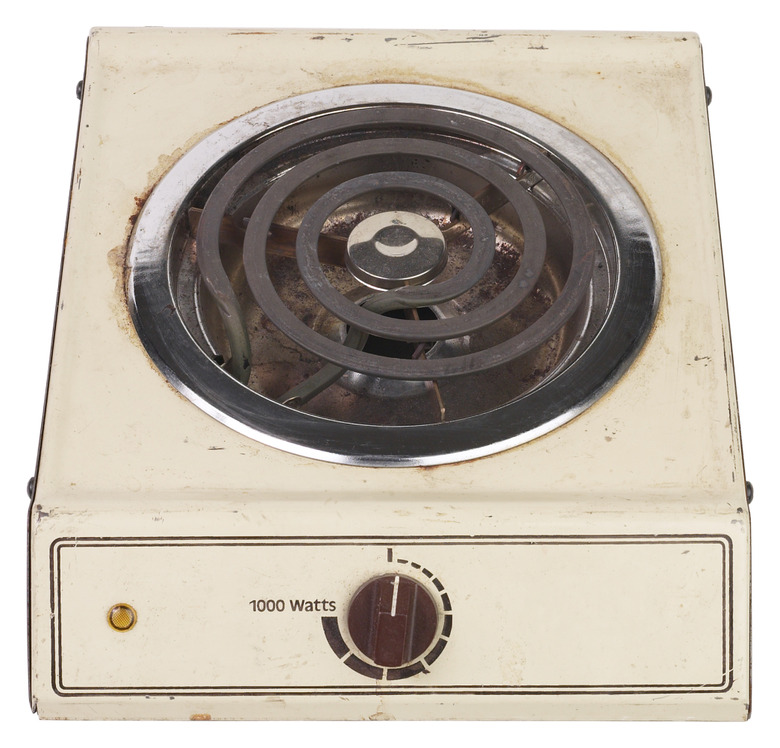Is There An Electric Range That Runs On A 110 Outlet?
Like many powerful electrical appliances, a full-capacity electric range usually requires a 220-volt outlet to function. But some homeowners might have only 110-volt circuits in their kitchen. Smaller cooking appliances and cooktops that run on 110 volts can serve as a solution to this limitation. Though these appliances are more limited in their capabilities, they can be used in combination to replace a full electric range.
Typical Electric Ranges
Typical Electric Ranges
The majority of electric ranges for a home require a 220- to 240-volt circuit with a 40 or 50 amp breaker. Generally these ranges have four or more working burners, in addition to a stove. Because of their use of electricity for heating, rather than gas combustion, electric ranges require a significant amount of energy. Kitchen ranges operated on less than 220 volts are rare because of the high amperage that would be required for a 110-volt range to operate.
110-volt Electric Ranges
110-volt Electric Ranges
110-volt electric ranges can be found easily, but they do not match the functionality of a 220-volt appliance. Those designed for home kitchens might include two or three burners and a small oven, though you might not be able to use all the components at one time. Similarly, small ranges designed for recreational vehicles are often compatible with 110-volt circuits. Another option is a hotplate, which has two burners. These are commonly used for portable cooking and classroom experiments. A toaster oven or tabletop convection oven can also serve as a functional substitute. A combination of these smaller appliances, plugged into separate circuits, can provide a relatively full cooking capacity without overloading the circuit.
Gas Ranges
Gas Ranges
Gas ranges are an ideal alternative when you need a range but are limited by the voltage of your outlet. Generally, gas ranges run on 110- to 220-volt circuits and require less electricity because they use gas combustion to produce heat. You might find that your utility costs are lower with a gas range, and that the functionality is proficient despite the lower voltage.
Limitations
Limitations
Homes have a limit for how many amps can be powered at once. The amps required by an appliance is determined by the watts divided by the volts. Following this formula, a cooktop with 110 volts can draw twice as many amps as a 220-volt model of the same size. For this reason, 110-volt ranges are not realistic based on the amp limitations of many homes. You should never plug in an appliance unless it is compatible with the circuit and amp limitations of your home. Contact an electrician if you're unsure about the compatibility of your appliance.
